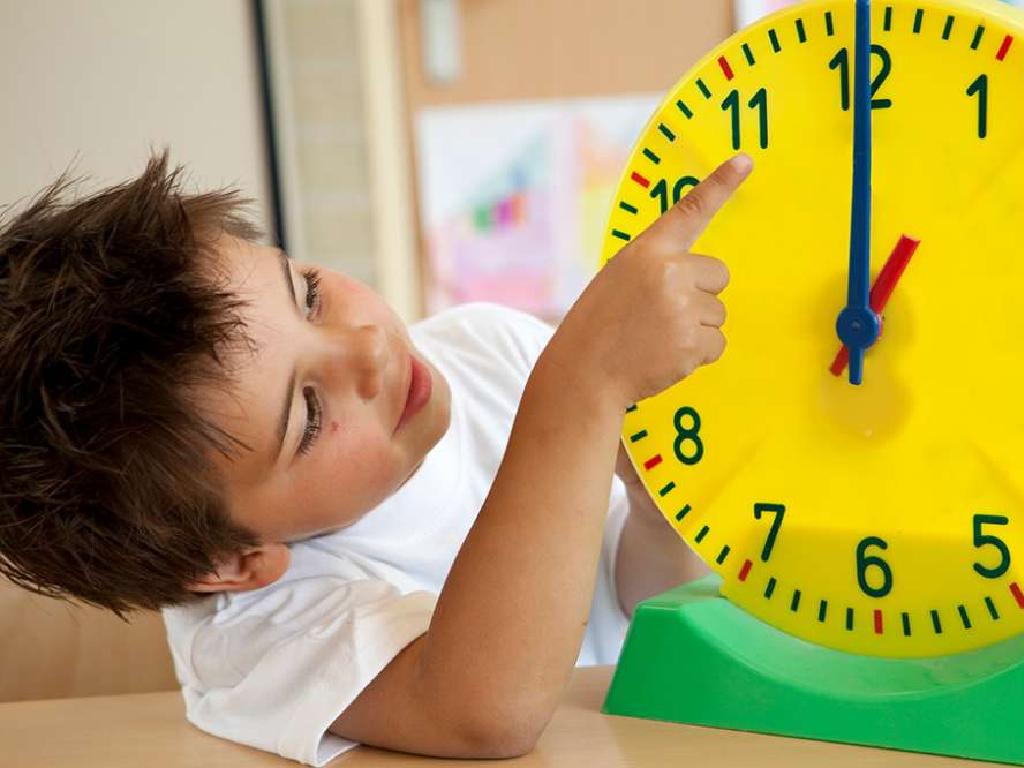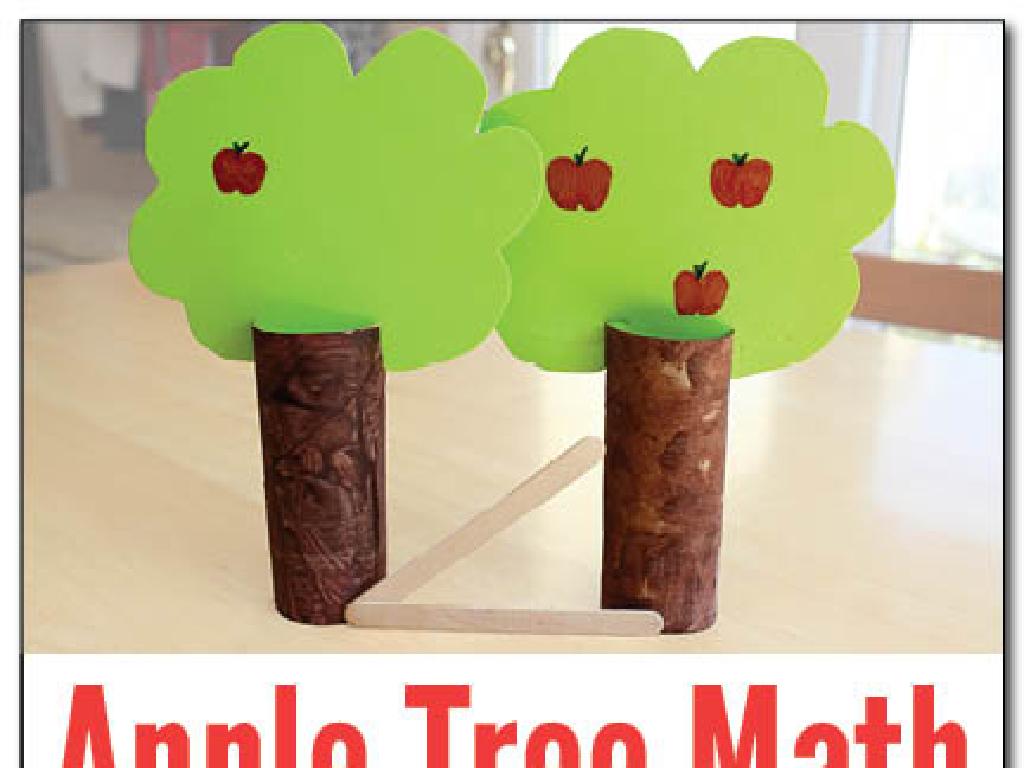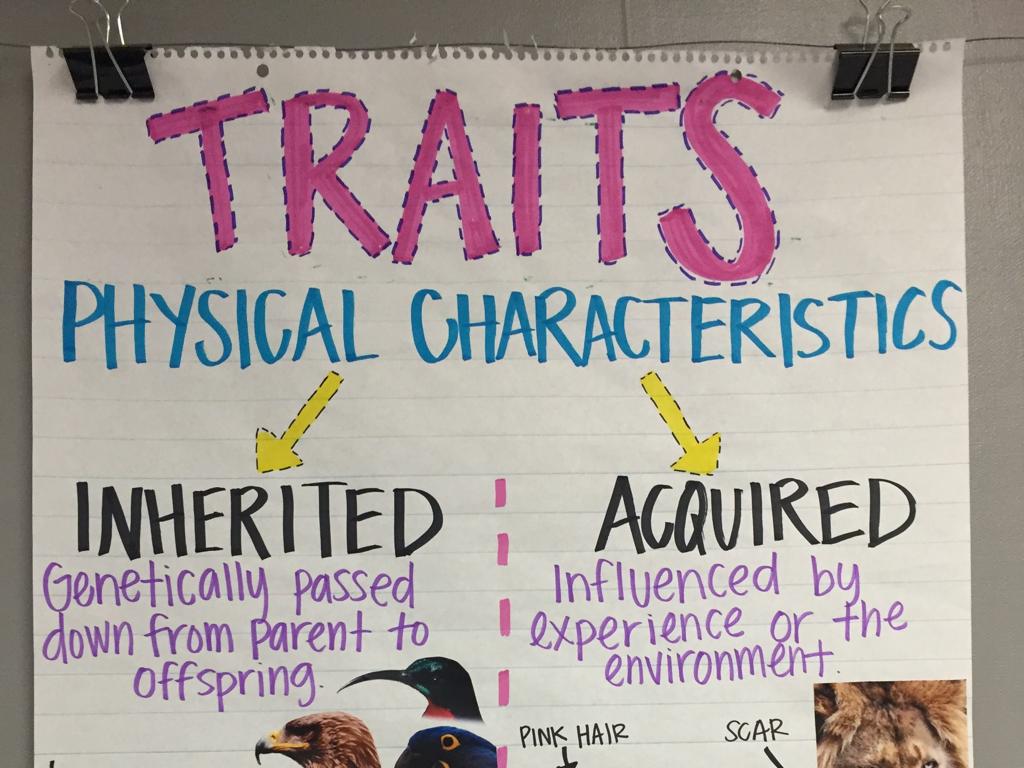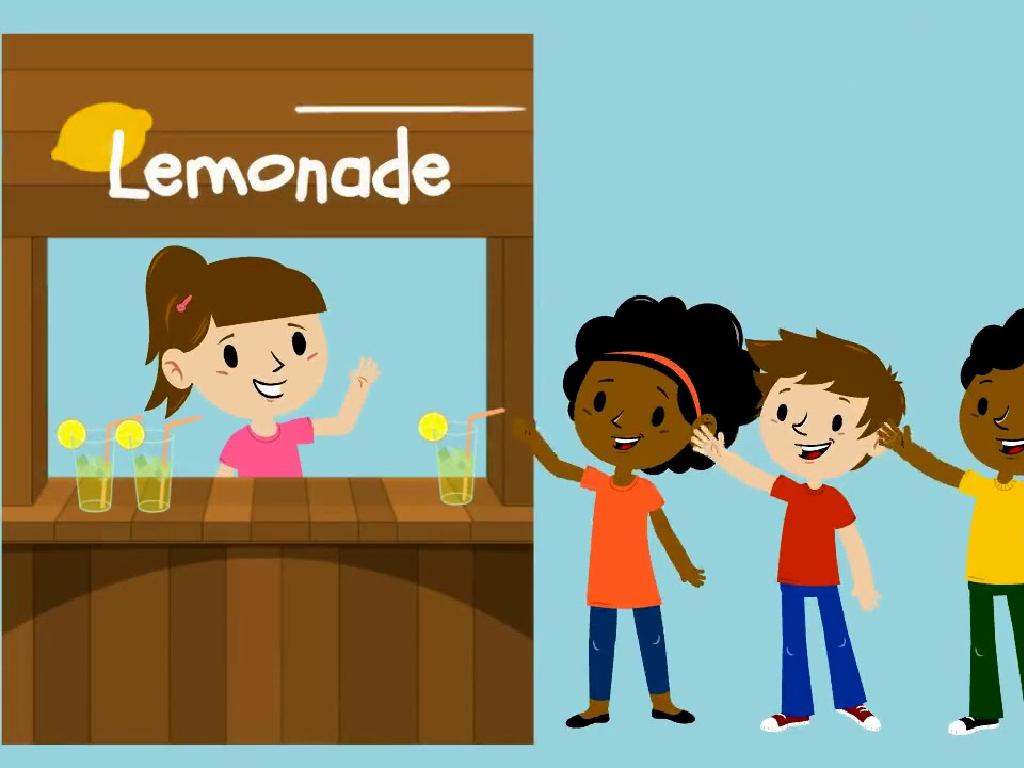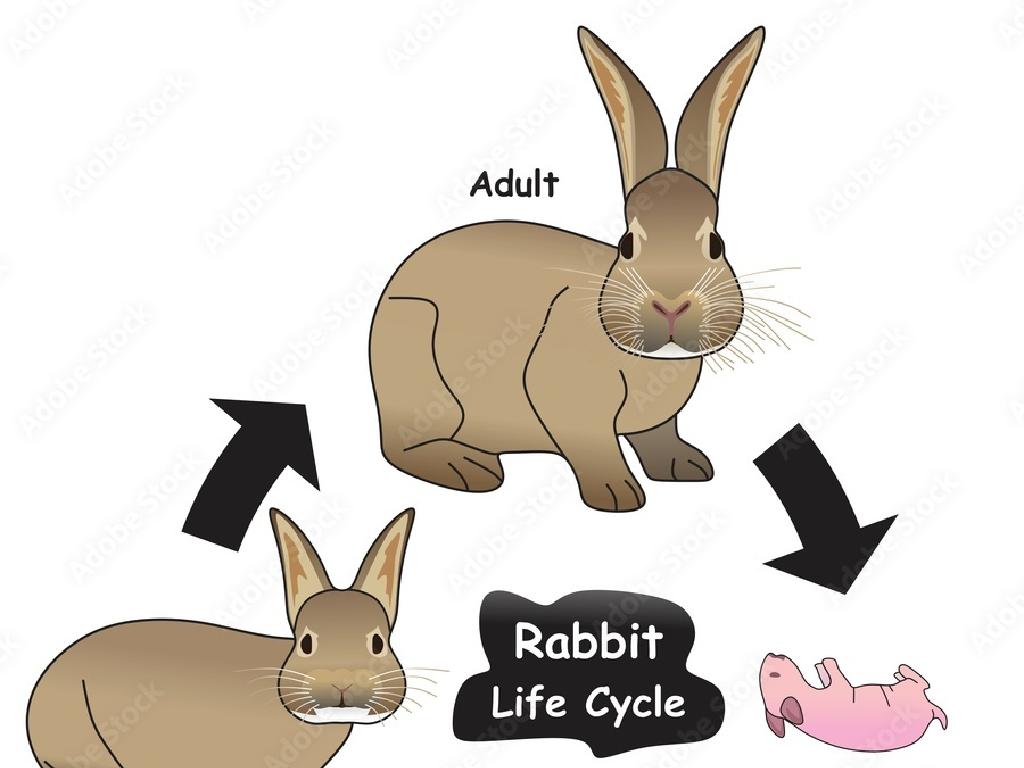Classify Objects By Texture
Subject: Science
Grade: First grade
Topic: Materials
Please LOG IN to download the presentation. Access is available to registered users only.
View More Content
Exploring Materials and Textures
– Learn about different materials
– Explore textures through touch
– Use hands to feel if things are rough, smooth, soft, or hard
– Describing objects by texture
– Use words like ‘bumpy’, ‘slippery’, ‘fuzzy’ to describe
– Classifying objects by how they feel
– Sort things into groups based on texture
|
This slide introduces first graders to the concept of materials and textures. The goal is to help students understand that objects can be made of different materials and these materials can feel different to the touch. Encourage the students to use their sense of touch to explore the textures of objects around them. Teach them descriptive words for textures to enhance their vocabulary. Finally, guide them in classifying objects based on their textures, which will help in developing their observational and categorization skills. Hands-on activities could include feeling and describing various items like cotton balls, sandpaper, silk, and more.
Exploring Textures
– What is texture?
– Texture is the feel of a surface to our touch.
– Types of textures
– Smooth, rough, soft, hard are some types.
– Examples of textures
– Velvet is smooth, sandpaper is rough.
– Finding textures around us
– Let’s touch and describe objects in class.
|
This slide introduces the concept of texture to first graders, helping them understand that texture refers to the way a surface feels to the touch. Start by explaining the term with simple words and then describe the different types of textures they might encounter. Provide relatable examples for each type of texture, such as velvet for smooth or sandpaper for rough. Encourage the students to think of their own examples and to explore their surroundings to find objects with various textures. This will help them grasp the concept through interactive learning. During the class, you can have a variety of materials available for the students to touch and describe, reinforcing their understanding of the lesson.
Exploring Textures with Touch
– Use touch to explore textures
– Bumpy textures like pine cones
– Feel a pine cone to notice the bumps
– Slippery textures like ice
– Notice how ice feels smooth and slick
– Textures tell us about materials
|
This slide is designed to introduce first graders to the concept of texture as a property of materials. Encourage the students to use their sense of touch to explore different objects around them. Provide examples of textures such as ‘bumpy’ with a pine cone and ‘slippery’ with ice to give them a tangible understanding of these descriptive words. Explain that textures can help us identify and classify objects. During the class, have a variety of textured materials available for the students to touch and describe. This will help them connect the vocabulary with real-world experiences. The goal is to make them aware of the diverse textures in their environment and to use appropriate vocabulary to describe them.
Exploring Smooth Textures
– What are smooth textures?
– Smooth textures feel slick, no bumps
– Examples of smooth objects
– Glass windows and polished stones
– Uses of smooth materials
– They help objects slide without friction
– Why smoothness matters
|
This slide introduces students to the concept of smooth textures in the context of everyday objects. Begin by explaining that textures describe how things feel. Smooth textures are easy to identify because they are very even and flat, with no bumps or roughness when we touch them. Show examples like a glass window or a polished stone to help students connect the concept with real-world objects. Discuss why smooth materials are useful, such as in areas where we need things to move easily over each other, like slides or ice rinks. Encourage students to think of and share other examples of smooth objects they’ve encountered in their daily lives.
Exploring Rough Textures
– Rough textures feel bumpy
– Not smooth, you can feel bumps or ridges
– Examples: sandpaper, rocks
– Like the gritty surface of sandpaper or a hard, uneven rock
– Tree bark is also rough
– The outside of a tree feels very bumpy and hard
– Rough helps things not slip
– Useful for grip, like on stairs or handles
|
This slide introduces students to the concept of rough textures in the context of everyday objects. It’s important to provide tangible examples that children can relate to and may have experienced, such as the feel of sandpaper, the hardness of a rock, or the ridged surface of tree bark. Emphasize that rough textures have a practical purpose, such as preventing slipping, which can be illustrated by objects like non-slip socks or stickers on the bathtub. Encourage students to touch and feel different objects to understand the concept of ‘rough’ better. You can bring in samples for a hands-on experience or ask students to find examples of rough textures at home for the next class.
Exploring Soft Textures
– What are soft textures?
– Soft textures feel gentle and nice.
– Examples of soft textures
– Like a cuddly teddy bear or a fluffy pillow.
– Uses of soft materials
– Soft things are used in items like pillows.
– Soft textures are for comfort
|
This slide introduces students to the concept of soft textures, which are materials that feel gentle and pleasant to the touch. Use tangible examples that children are familiar with, such as teddy bears and fluffy pillows, to illustrate soft textures. Explain that soft materials are often used in objects meant for comfort, like pillows, blankets, and stuffed animals. Encourage the students to think of and share other examples of soft objects they have at home or in the classroom. You can bring in a few soft items for the students to touch and feel, helping them understand the concept of texture through direct sensory experience.
Exploring Hard Textures
– Hard textures are solid
– They feel very firm to touch
– Examples: brick, helmet
– A brick in a wall, a helmet for biking
– Used for strength and protection
– Like buildings and safety gear
|
This slide introduces students to the concept of hard textures, which are solid and firm to the touch. Use tangible examples that children can relate to, such as bricks in walls or helmets used for biking, to illustrate the practical applications of hard materials. Explain that these materials are chosen for their strength and ability to protect. During the class, you can bring in samples of hard-textured items for the students to touch and feel, reinforcing the concept. Encourage the children to think of and discuss other examples of hard textures they have encountered in their daily lives.
Class Activity: Texture Scavenger Hunt
– Explore textures in our classroom
– Find objects: smooth, rough, soft, hard
– Feel and categorize objects by touch
– Use your Scavenger Hunt sheet
– Mark the texture next to the object on your sheet
– Record your texture findings
– Draw or write the object under its texture type
|
This activity is designed to help students apply their knowledge of textures in a fun and interactive way. Provide each student with a Texture Scavenger Hunt sheet that has columns for smooth, rough, soft, and hard. Encourage them to touch objects in the classroom and categorize them based on their texture. They should mark their findings on the sheet, either by drawing a picture of the object or writing its name under the correct texture column. Possible objects for the activity could include a smooth desk surface, rough sandpaper, a soft stuffed animal, and a hard book cover. This hands-on experience reinforces their understanding of textures and how to classify objects based on this property.
Share What You Found!
– Gather in a circle with your objects
– Describe each object’s texture
– Is it rough, smooth, soft, or hard?
– Explain why you chose each object
– Did the texture make it interesting?
– Remember, every discovery is great!
|
This activity is designed to encourage students to explore and communicate their observations about different textures. As the students gather in a circle, they will have the opportunity to hold up the objects they found and describe the textures to their classmates. Encourage them to use descriptive words like rough, smooth, soft, or hard. Ask them why they chose each object and what made the texture interesting or unique to them. Reinforce that all observations are valuable and that there are no incorrect answers. This will help foster a supportive environment where students feel comfortable sharing and discussing their findings.
Exploring Textures: Conclusion
– Congratulations on the Scavenger Hunt!
– Mastery in classifying textures
– You’ve learned to sort objects by feel
– Textures make the world unique
– Rough, smooth, soft, or hard – textures vary
– Keep observing textures around you
|
Well done to all the students for completing the Texture Scavenger Hunt! This activity has helped them understand how to classify objects based on how they feel. It’s important for them to remember that textures are a part of our everyday lives and they add diversity to our environment. Encourage the students to continue observing and touching different surfaces they encounter every day, reinforcing their learning experience. As they interact with various objects, they’ll become more aware of the rich tapestry of textures that make up our world. Keep fostering this curiosity and observational skills in future lessons.

